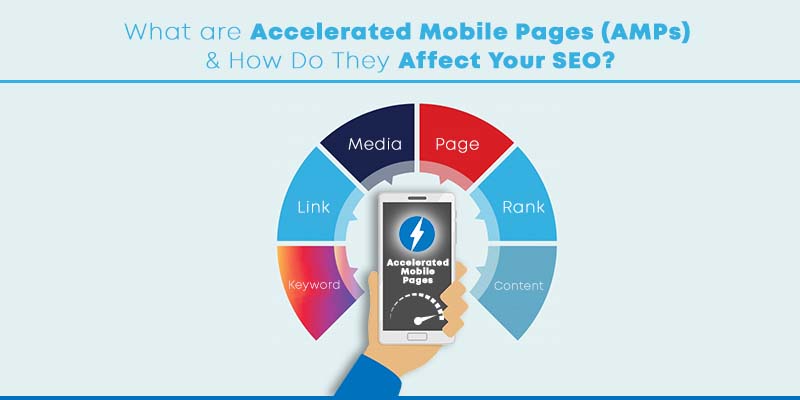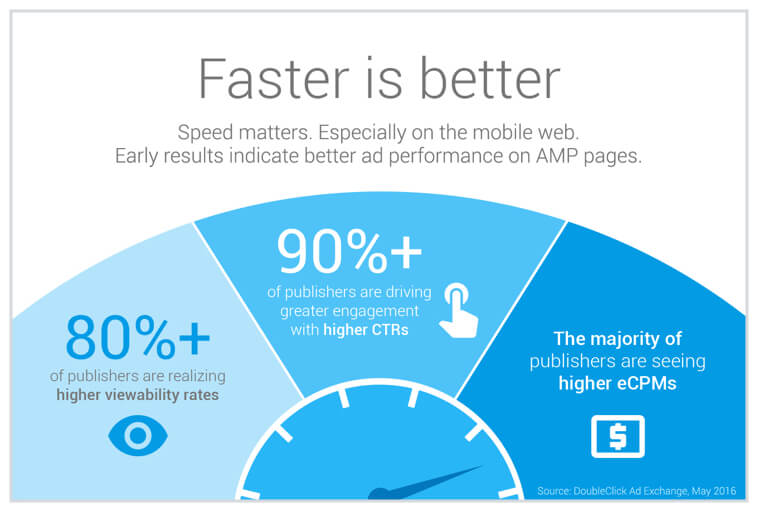I hope you enjoy reading this blog post.
If you want to get more traffic, Contact Us

Click Here - Free 30-Minute Strategy Session
Be quick! FREE spots are almost gone for this Month. Free Quote

With the web evolving continuously, Google has particularly made it evident that it really intends to push the limits. Particularly, when it comes to revitalizing the mobile user experience with Google AMP pages.
Having said that, by now you may have definitely heard about with Google AMP pages – “Accelerated Mobile Pages (AMPs)” – a more eloquent way to quickly serve the content on the mobile devices.

Click Here – Free 30-Minute Strategy Session
Be quick! FREE spots are almost gone for this Month
So, what are AMPs? What is their significance in search? Why use Google AMP pages? Should I use accelerated mobile pages? How Should You Prepare for it?
In this blog we have laid out all the important details on with Google AMP pages and AMP SEO 2018 for you.
Accelerated Mobile Pages from Google are truly an evolution that can have a major impact on the organic visibility of your AMP website.
This makes it a critical ranking factor.
Well, before we dive deep into its impact on your SEO, let us first understand what exactly are AMPs and the significance of AMP pages SEO.
An Accelerated Mobile Page – short for AMP – in essence, it is a framework that succinctly serves the web pages to mobile devices, quickly and using less resources.
Technically, AMP Google is an extremely light HTML page that primarily designs fast-loading pages.
Besides, it is a project from Twitter and Google that aims to create extremely fast mobile pages.
The framework of AMP sites consists of the following three basic components that function together to deliver Accelerated Mobile Pages – AMP HTML, AMP JavaScript and Content Delivery Network. Let us now see what each of these are:

In AMP HTML, some HTML tags just cannot be used, such as the outdated forms.
Besides, you should also be using a streamlined version of the CSS.
However, in this most part of the CSS can be used baring those that fall under the best practice, which just cannot be used.
Next, JavaScript is basically not at all allowed. So, you should leverage some off-the-shelf JavaScript, which you will be provided with.
The one that provides elements like lazy loading.
So, the overall idea is to design a complete platform that ensures pure speed and pure readability.
Elements such as the images will not load until they are scrolled into the view – and JavaScript is the one that does all these for you.
We expect that the JavaScript library will be built into specific operating systems.
Next, this is designed to be very heavily cached, preventing Google from hosting these pages.
You can then host the actual content there, ruling out the need to fetch your data from somewhere.
You are definitely used to the idea of regular desktop version of the web pages.
If your source code contains the APM version, then you can designate it with rel AMP HTML link which in turn points out to what is known as the “hosted AMP page”.
Now, this is nothing but a page that is present on your domain but constructed from the different form of HTML.
You can even see this in action when you just add /amp at the end of a new story on a website and you will see AMP HTML.
It will linked to AMP HTMP link present in the source code.
That is about hosted AMP, which is independent of Google. You can go with that and it is also designed to be quicker.
This hosted cashed platform is free of cost and is labeled as gstatic.
When you actually notice things being showed up in the search results of Google, the version that gets listed there will be actually hosted on the gstatic.com, simply put – your cached version that is hosted by the Google.
Critically, both these versions – the one cached around the internet and the one hosted by you will have rel=canonical that is original.
It will be more like the rel alternative in your mobile world.
It is also potentially designed to ensure that these elements are content bits which can potentially be cached anybody, where the rel=canonical will not be pointing back to you.
Also, we will definitely not be wrong if we say that you will still be able to offer your own adverts on these cached versions of these web pages.
However, we just do not know the other details of it. But there is a platform which is built to help you serve adverts from Outbrain, ADSense and various other popular advertising platforms.
The best part is you will be the one who will be amassing all the revenue as they do not take it.
Furthermore, Analytics can be used along with your cached versions of the web pages.
The ultimate goal of any marketer to gain a better position on SERP, so let us see what kind of impact does AMP have on SERPs.
At the moment, we just know that it is exclusively for mobile – after all that is what the name says Automatic Mobile Pages.
It more about going mobile.
There are numerous benefits of using AMPs, with the most obvious one being the speed.
Your website speed is an important ranking factor. So, this directly has an impact on your search engine rankings.
With consumer patterns and trends evolving continuously, Google works aggressively to adapt accordingly.
There are two aspects to be taken care of. First, you should be able to build Google AMP pages for your website.
Second, to ensure that those web pages are valid, as we already discussed earlier it is the scrapped version of HTML.
However, the HTML is built on strict strategies, where the tags should be in specific places as well as in specific orders.
Also, you are not supposed to make use of certain things. If you breach any of these guidelines, you will not be able to use as the page becomes invalid.
Validating your AMP pages requires you to use a toll that is built into the Chrome.
As soon as you open the Chrome’s developer tools, you will find a system which can be looked up on AMP project website.
Here, you will actually be able to visit a page and request it to validate stating – “Whether this is an AMP page”.
First, create Google AMP pages and also ensure that you are building it well.
Second, working out on streamlining the process of building the pages.
Now, if you are working on a content management system or something like that, then moving forward you would certainly want it to become an integral part of your process.
Now, you want all your web pages to be PMP pages or you want maximum number of pages available in the AMP version of those pages is up to you.
So, for the most sought after content management systems such as the AMP WordPress, already have the required plugins ready.
You can just relax and just download that particular plugin.
Basically, for a number of pages it provides a lot of help for you to create those Google AMP pages.
Furthermore, if you are planning to build your own content management system, then you should work on getting the same type of functionality in that content management system as well.
Found the blog helpful? Then just leave your thoughts in the comments section below. We look forward to hear from you.

LEAVE A REPLY